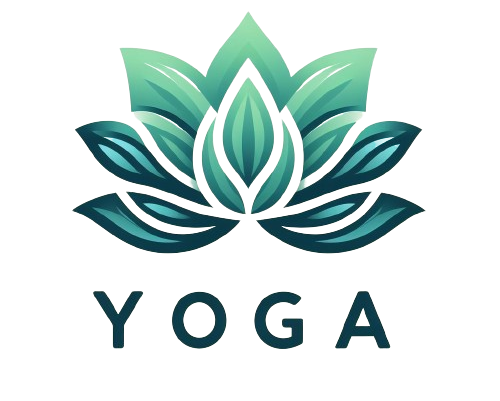So, you’re probably wondering how to add a bit of zing to your meditation practice, or maybe you’re just curious about how visualization techniques can ramp up your mindfulness game. Regardless of where you’re standing on your meditation journey, understanding and incorporating visualization can transform your experience.
What is Visualization in Meditation, Anyway?
Visualization in meditation is a powerful and transformative method that goes well beyond the simple imagination or idle daydreaming. It’s an intentional and disciplined practice where you use the vividness and creativity of your mind to picture specific scenarios, objects, or outcomes. What makes it distinctive is its purposeful nature. You direct your mental imagery to achieving a state of deep relaxation, healing, personal growth, or even to the manifestation of your desires and aspirations in the tangible world. This focused application of visualization can influence your emotional well-being, help you cultivate a more positive and serene state of mind, and potentially bring about changes in your life by aligning your thoughts and energy with your goals. By tapping into the power of visualization during meditation, you’re programming your subconscious with detailed scenes and narratives that reflect your hopes, dreams, and objectives, making it a potent tool for transformation and self-improvement.
Why Bother with Visualization?

You might find yourself wondering about the tangible benefits of weaving visualization techniques into your meditation routine. It may seem like an embellishment to the traditional practice of meditation, but the truth is, visualization brings a host of impressive advantages that can significantly enhance the quality of both your meditative experiences and everyday life. Regarding stress reduction, visualization is remarkably powerful. By mentally transporting yourself to a serene and tranquil environment—be it a lush forest, a quiet beach, or even a cozy, imagined nook—you activate a relaxation response in your body. This process can lower your stress levels in the moment and contribute to a longer-term state of calmness and reduced anxiety.
When it comes to improving focus, visualization acts as a mental training camp. It requires and cultivates an intense level of concentration. Engaging in this practice can refine your ability to maintain focus on tasks, studies, or any activity requiring undivided attention. This mental discipline also aids in filtering out distractions more effectively enhancing your productivity and efficiency in all sorts of endeavors.
By consistently envisioning your desired outcomes with as much detail and clarity as possible, you essentially prime your brain to be more attuned to recognizing the resources, people, and opportunities around you that can propel you toward your goals. This mental strategy keeps your objectives top of mind, it can also subtly shift your mindset and behaviors in ways that make those goals more attainable.
Tthe impact of visualization on creativity is profound and far-reaching. This practice can unlock and stimulate parts of your brain responsible for creative thinking and problem-solving, which might remain underutilized during routine, daily tasks. By engaging these areas of the mind, visualization enhances your ability to think outside the box and also leads to discovering innovative solutions to challenges and generating unique ideas in various aspects of life.
So, incorporating visualization into your meditation practice could indeed require some extra effort, but the array of benefits it offers—ranging from stress reduction and increased focus to improved creativity and facilitated goal achievement—makes it a worthwhile endeavor. These advantages illustrate just how powerful your mind is and how, with the right techniques, you can harness that power to foster significant positive changes in your mental well-being and life overall.
How to Get Started with Visualization
First, find a quiet spot where interruptions are less likely. Comfort is key, so grab that fluffy cushion or yoga mat. Once you’re comfy, close your eyes. This helps switch off the external world and turn the volume up on your inner experience.
Start with deep breaths. Inhale, feeling your belly rise, and exhale, letting any tension melt away. This isn’t just about getting oxygen in; it’s about setting the stage for relaxation and focus.
Here’s where it gets personal. You pick a scene or goal to visualize. Imagine a tranquil beach, or picture yourself nailing that presentation. Feel the sunshine or the applause. Make it as vivid as you can – colors, sounds, even smells. The key? Feel it like it’s happening.
Beginner Tip: if crafting your own scene feels like too much, guided visualization apps or recordings can be super helpful.
Visualization in Action
Incorporating visualization into your daily meditation routine transcends the boundaries of attaining a state of serene tranquility or achieving zen-like calm—though, admittedly, those are substantial benefits. If your objectives encompass excelling in academia, fostering deeper and more meaningful connections in your relationships, or bringing a long-cherished dream project to fruition, visualization serves as a critical tool in preparing your subconscious mind to navigate the path toward these successes. By imagining the process and the favorable outcome of your pursuits, you aren’t just daydreaming about far-fetched aspirations. You’re mentally charting a course that your subconscious begins to recognize as feasible, effectively turning your visions into a series of potential real-life action plans.
With regular practice, this method does more than just make your goals seem within reach; it essentially familiarizes your psyche with the sensation of achieving them, thereby reducing the fear of the unknown and bolstering your confidence. This perceived familiarity with success removes mental and emotional barriers, making the actual tasks feel less daunting and more within your capabilities. It’s akin to rehearsing a presentation multiple times before the actual event; by the time you’re standing in front of an audience, the content feels well-trodden and manageable, significantly reducing performance anxiety and improving delivery.
Through the act of visualizing detailed outcomes, you’re also unwittingly refining your problem-solving skills. Your mind begins to work through potential challenges in your visualized scenarios, equipping you with strategies and insights that can be applied in real situations. This preemptive mental exercise can reduce the time and energy spent on trial and error in the physical realm, making your journey towards your goals more efficient and straight-forward.
Visualization within your meditation practices is a dynamic and practical strategy for personal and professional development. It leverages the immense power of your subconscious, making your aspirations feel achievable and already familiar, thereby laying a robust psychological foundation for tangible real-world achievements. Through this powerful method, you’re preparing for success; you’re expecting it, which in turn, magnificently paves the way for the fruition of your goals in the real world.
